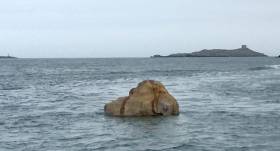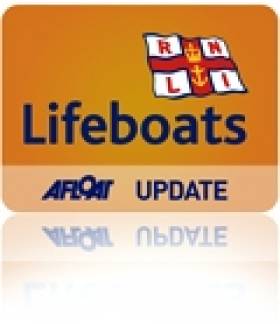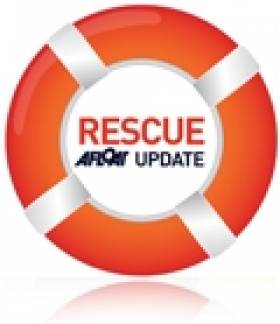Displaying items by tag: rock
A New Dublin Bay 'Rock' Appears off Dalkey?
Last season Dublin Bay sailors hit rocks off Dalkey Island prompting Dublin Bay Sailing Club, the largest leisure users of the bay, to issue a warning over the hazard. Known locally as 'Leac Buidhe', the rocks in Muglins Sound gave some sailors a bump at low water. As a result, sailors were warned to stay away from rocks at the North end of Dalkey Island. This week Afloat.ie has been sent a number of photos depicting a new 'rock' in a nearby location.
The mysterious appearance is nearly as amazing as last month's story on Afloat about the cruising boat that witnessed a volcano emerging in the Pacific. Except this time, Afloat has been reliably informed, the new 'rock' won't cause much of a bump because it is made of fibreglass and linked to a film crew based at nearby Coliemore Harbour! Realistic isn't it?
Lough Derg Lifeboat Uses Salvage Pumps to Save Cruiser on Rocks
At 17.54hrs the lifeboat, with helm Eleanor Hooker, Colin Knight and Ger Egan was launched. The lifeboat carried its salvage pump, and in addition, Lifeboat Operations Manager, Charles Stanley-Smith made contact with Fergal Kerney, Lifeboat Deputy Launching Authority, who agreed to take a second salvage pump to Portumna by road.
At 18.15hrs the lifeboat was alongside the casualty vessel which was listing to port and on rocks. There were two persons on board (the skipper has been joined by a friend, a marine mechanic). The lifeboat transferred an RNLI crew member and the salvage pump to the casualty vessel and the lifeboat salvage pump was immediately put to work. The cruiser Aftermath met Fergal Kerney and took him to the scene. At 18.21hrs the lifeboat transferred the second salvage pump to the casualty vessel, set up a tow and held off head to weather.
At 19.25, (it was now dusk) and with two pumps running, the vessel was not floated. At 19.34hrs, RNLI Lifeboat helm agreed one last attempt to float the vessel before taking all persons off. Eamon Egan, Marine Engineer, brought a third, larger pump to the vessel from Portumna. At 19:45hrs, when the boat was not floated with three pumps running, the lifeboat made the decision to take all persons off and advised Valentia Coast Guard of same. At 20.15hrs, the two persons from the casualty vessel were transferred onto Aftermath, who had offered to take them back to Portumna. The owner will attempt to refloat his vessel in daylight tomorrow. The lifeboat returned to station and was ready for service again at 21.10hrs.
Children Rescued From Co Down Waters
Four teenagers were rescued in Co Down last weekend when they were cut off by the tide, the News Letter reports.
The teens were caught up to their shoulders in water at Ardilea on Saturday evening when they were retrieved by a former volunteer coastguard who lives nearby.
The group were met at the shore by the South Down Coastguard Rescue Team and NI Ambulance Service paramedics and taken to hospital showing signs of hypothermia.
Meanwhile, on Friday night RNLI Bangor lifeboat rescued a young girl stranded on a rock near Groomsport after a call from a member of the public.
“With waves breaking around the knees of the frightened child it was paramount that she be brought ashore as quickly as possible," said a coastguard statement.
The girl was treated by waiting paramedics at the shore.
































































